Autumn Landscape Photography Tips
Autumn is arguably the best season for landscape photography for many, and for good reasons. Apart from the beautiful fall colors, there are several other reasons why autumn is regarded by many as their favorite season for landscape photography.
Autumn often offers a more dramatic light and weather conditions. The weather is more changeable compared to other seasons. The interplay between the sun and the clouds can create spectacular light plays. Snow can make its first appearance on the highest peaks.

Engadine, Switzerland
The sun itself hangs lower on the horizon compared to summer. This makes the light warmer for longer during the day. This also means a longer golden hour, especially at higher latitudes. Sunset and sunrise happen at more “approachable” hours.
Fog appears more frequently in many areas, adding a new layer of opportunities for those doing landscape photography in autumn. And, if there’s rain, there are often rainbows.
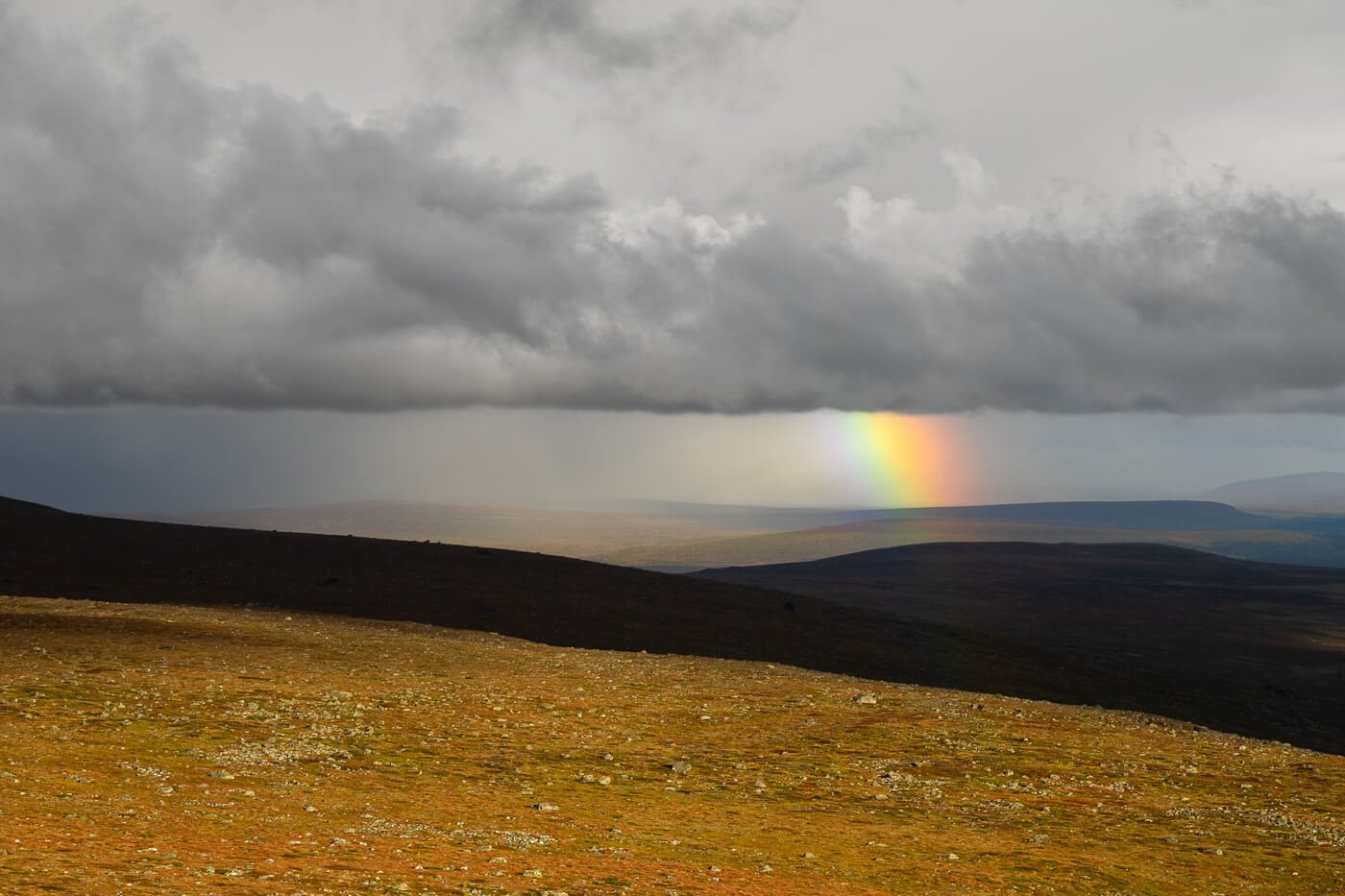
Rain, clouds, and lighting up a show in the Arctic autumn of Swedish Lapland.
Last but not least, most of the summer crowds have already disappeared from most tourist destinations. The hiking trails are less crowded, and the landmarks are less busy. With such premises, what’s not to like about Autumn?
It is also my favorite season for landscape photography, and the one I spend the most time taking photos. So are some tips based on how I do my own landscape photography in Autumn, as well as some thoughts on why it’s my favourite season for that purpose. And hopefully, some fall photography ideas in case you are looking for any.
Table of Contents
Use a polarizer – and know when not to
This is a tip you’ll see in every “Autumn Landscape Photography” article: use a polarizing filter. This is great advice for many reasons. It enhances color saturation, reduces glare, and reflection. With fall colors, it really helps to capture the colors at their fullest. And you can’t really reproduce a polarizer’s effect in post.
Sometimes it can saturate them a little too much, too, depending on the light and on the subject. In that case, you may want to tone it down a little. For that same reason, you also may want to learn when to use it and when not. For instance, sometimes you may want to enhance reflections in your images instead of eliminating them. In that case, you may also want to tone them down or use them to enhance the reflection.
Yes, you can also use a polarizer to enhance reflections. The easiest way to do it is to just turn it until the reflection really pops.
Here are a couple of examples. In this set of images, you can see both how the polarizer removes the reflection on the water and how it enhances the colors, making them both more vibrant in contrast. The difference may be hard to see on a smaller screen, but you can notice how the water has fewer reflections in the image on the left-hand side, and how the rest of the trees are a little more contrasty and saturated.
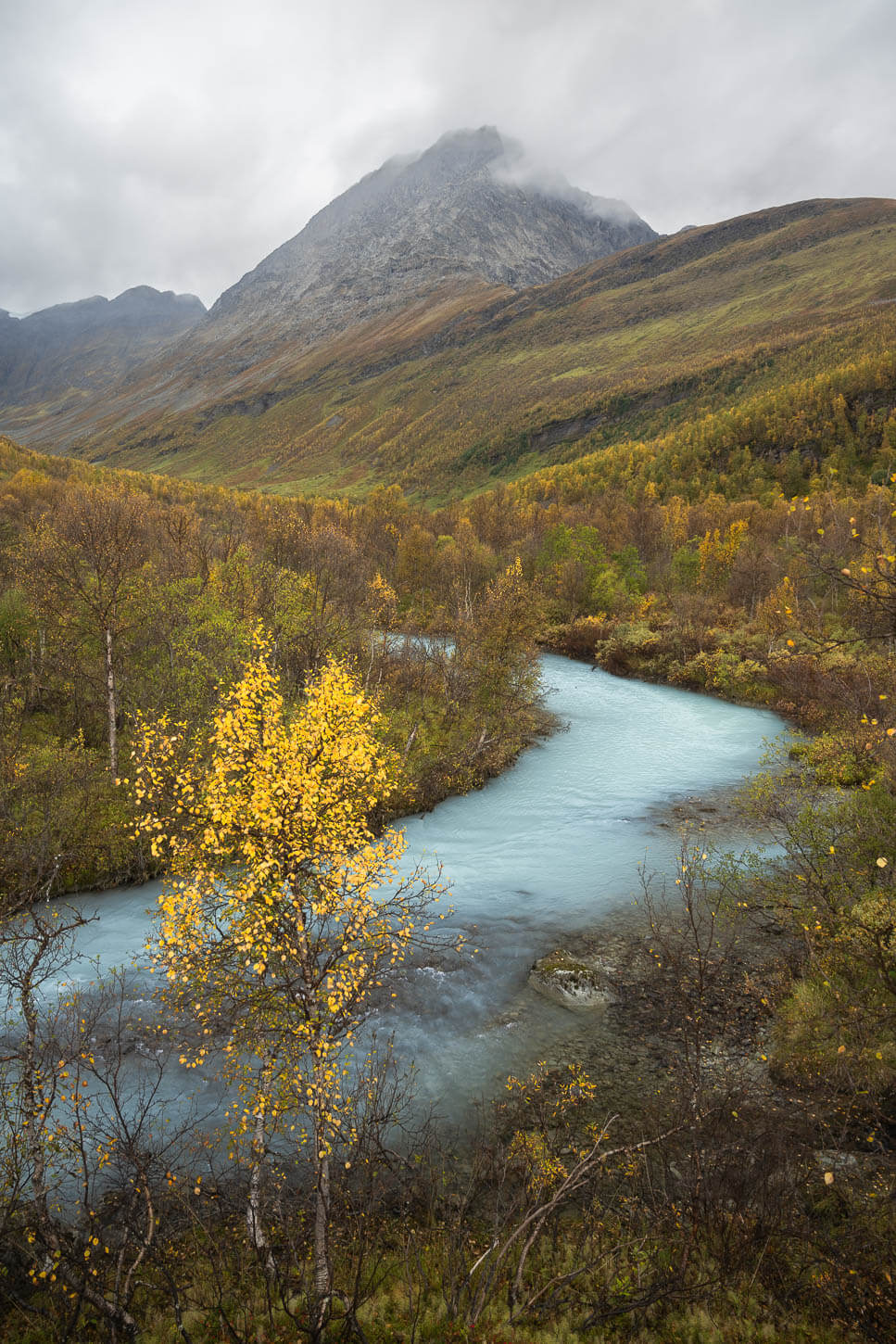
Image taken with a Polarizer
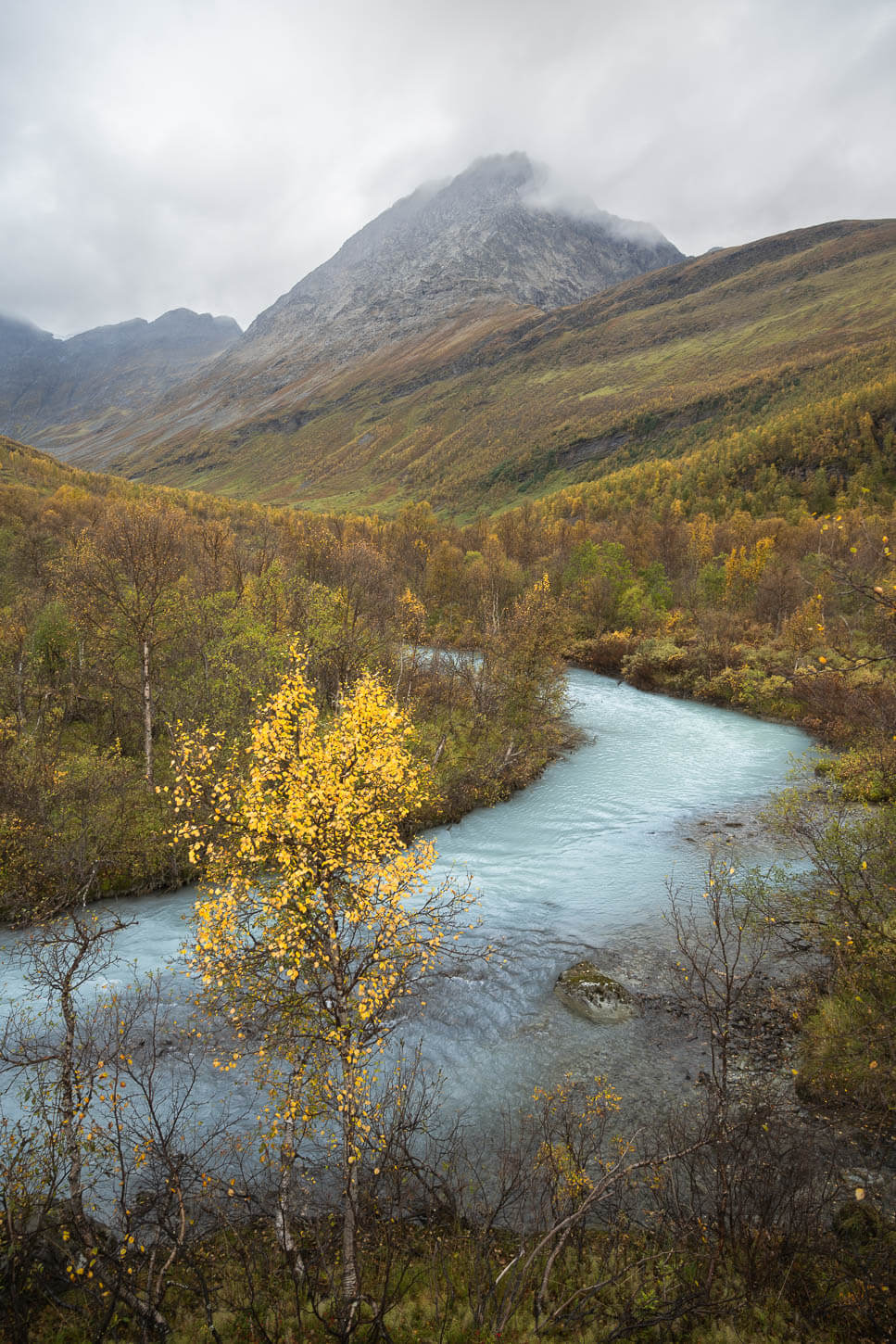
Image taken without a polarizer
In this other set of images, you can see what I mean when I say you may want to keep or enhance the reflection. In this case, the rivers reflecting the light fill the image better, adding more visual elements to the image that enhance the composition.

Use of polarizer to enhance reflections.
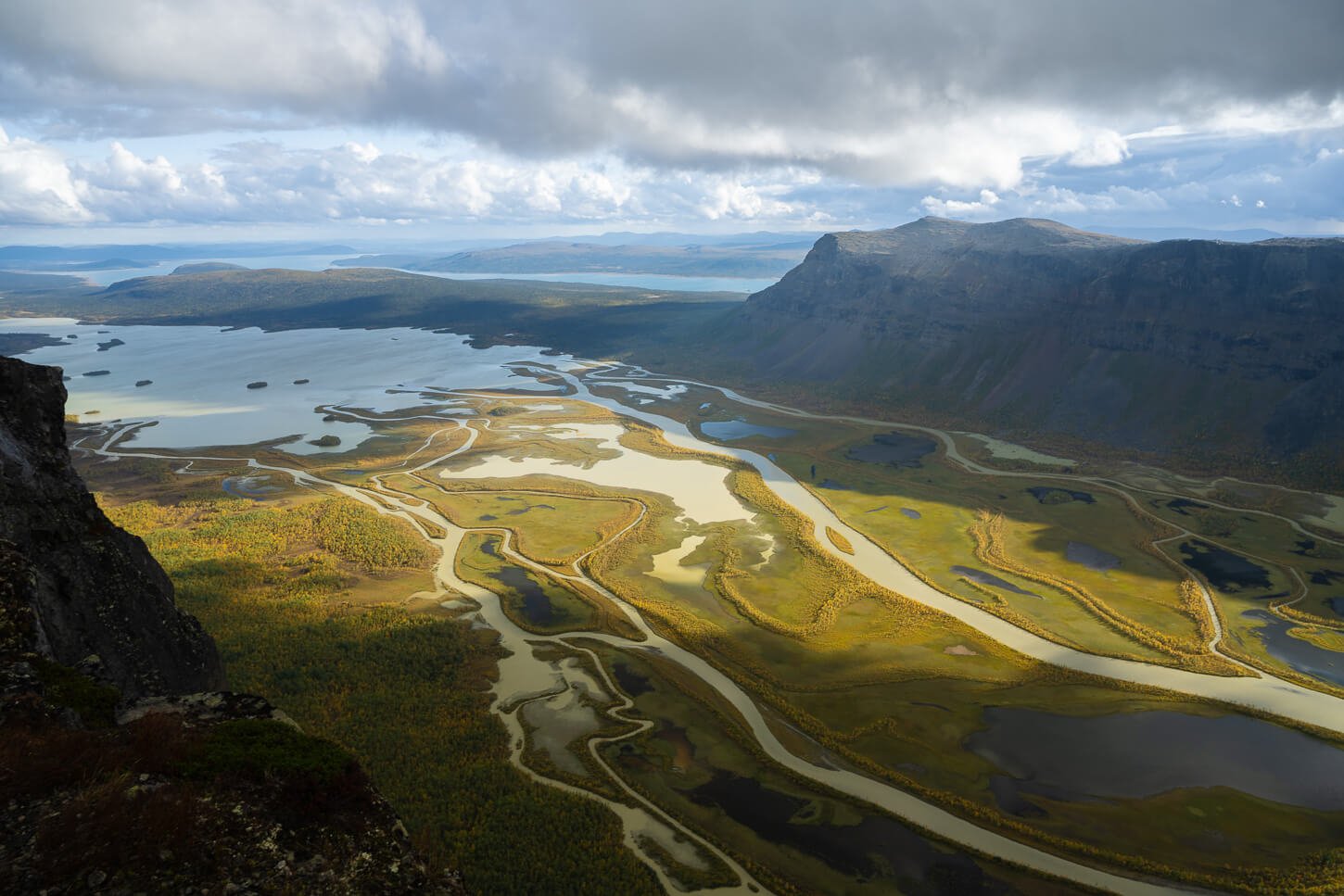
Use of Polarizer to remove reflections.
Catching Autumn Colors
While autumn colors are beautiful in their own right due to their warmth and richness in shades, they also work great because it’s easier to find natural, complementary colors in a landscape. For instance, the variety of blue skies and the variety of orange or yellow shades of the foliage. Or, instead of the sky, the colors of a river.
Complementary colors work great because they complement and enhance each other harmoniously. It’s much easier to find them in nature during the fall. If you are looking for autumn photo ideas, you could go out and try to catch naturally occurring complementary colors, or as close as they could possibly be, in the environment around you.

Golden hours, Sunrise and Sunset
Golden hours are one of the “best hours” for landscape photography, even more so in Autumn. Golden hours last longer in autumn, because the sun lies low on the horizon for longer. The further north you go, the longer it lasts. This also applies to sunset and Sunrise; the further north you go, the longer they last.
Sunset and sunrises also happen, respectively, earlier and later in the day in autumn compared to summer and most of spring. This means you don’t have to wake up at the crack of dawn to catch Sunrise in Autumn, and you don’t have to stay up late to catch sunset and get back home, all the while still enjoying milder temperatures compared to early spring, for instance.
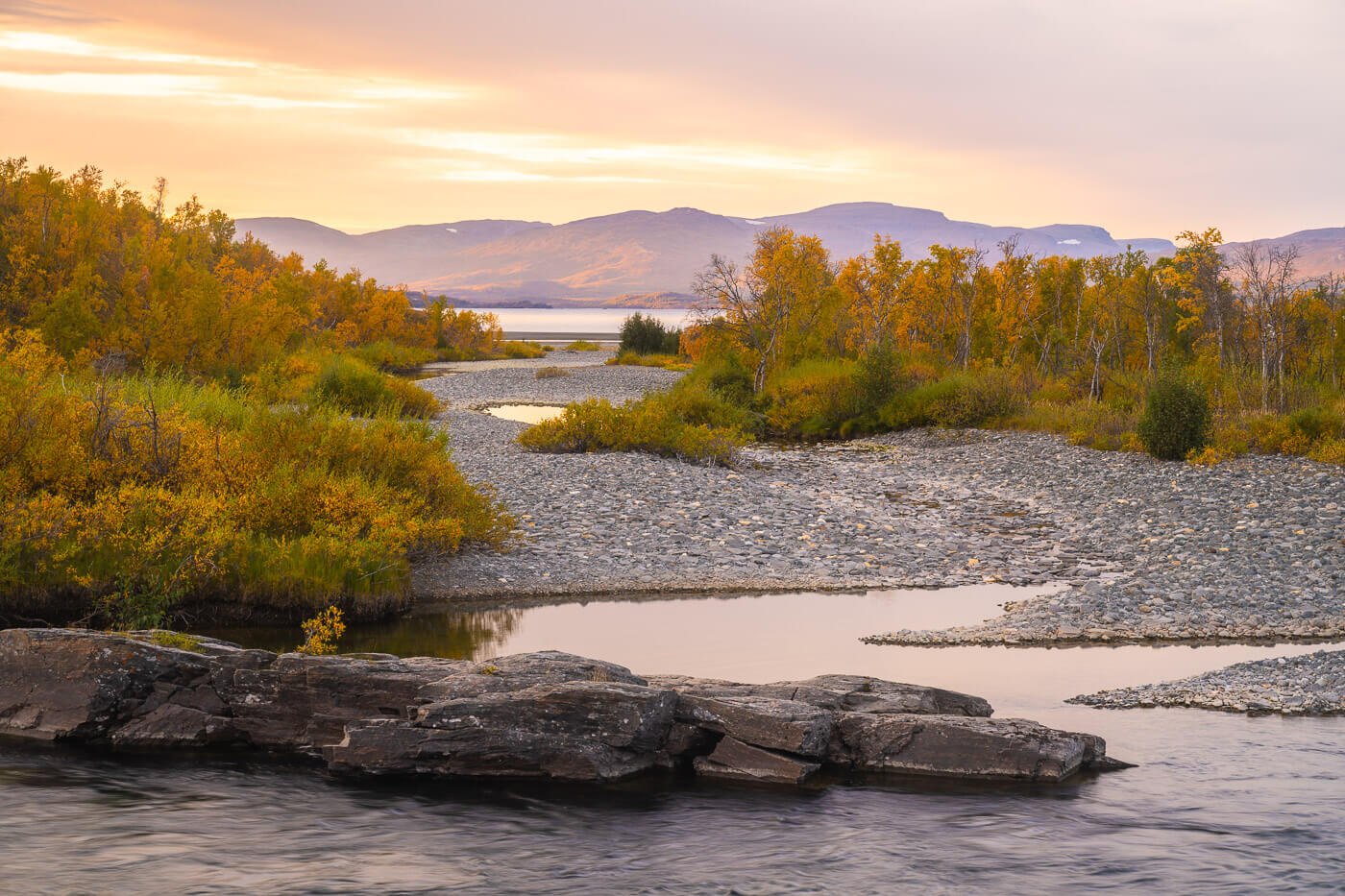
Embrace the Bad Weather: Dramatic Light, Rainbows, and Fog
Autumn is a season with changing weather. This can be great, assuming you are willing to spend time out in poor conditions too sometimes. You don’t need to be out in the pouring rain for hours, but you’re likely willing to spend time outside with passing showers. With these conditions, and considering that, as we’ve seen, the sun hangs lower on the horizon, this can help to create beautiful light plays when there’s a break in the clouds.

Autumn in Swedish Lapland.
Not only that, but with the sun lower on the horizon and a passing shower, it is also easier for a rainbow to be visible. Again, the combination of increasingly variable weather and a lower angle of the sunlight creates more favourable conditions for them to appear.
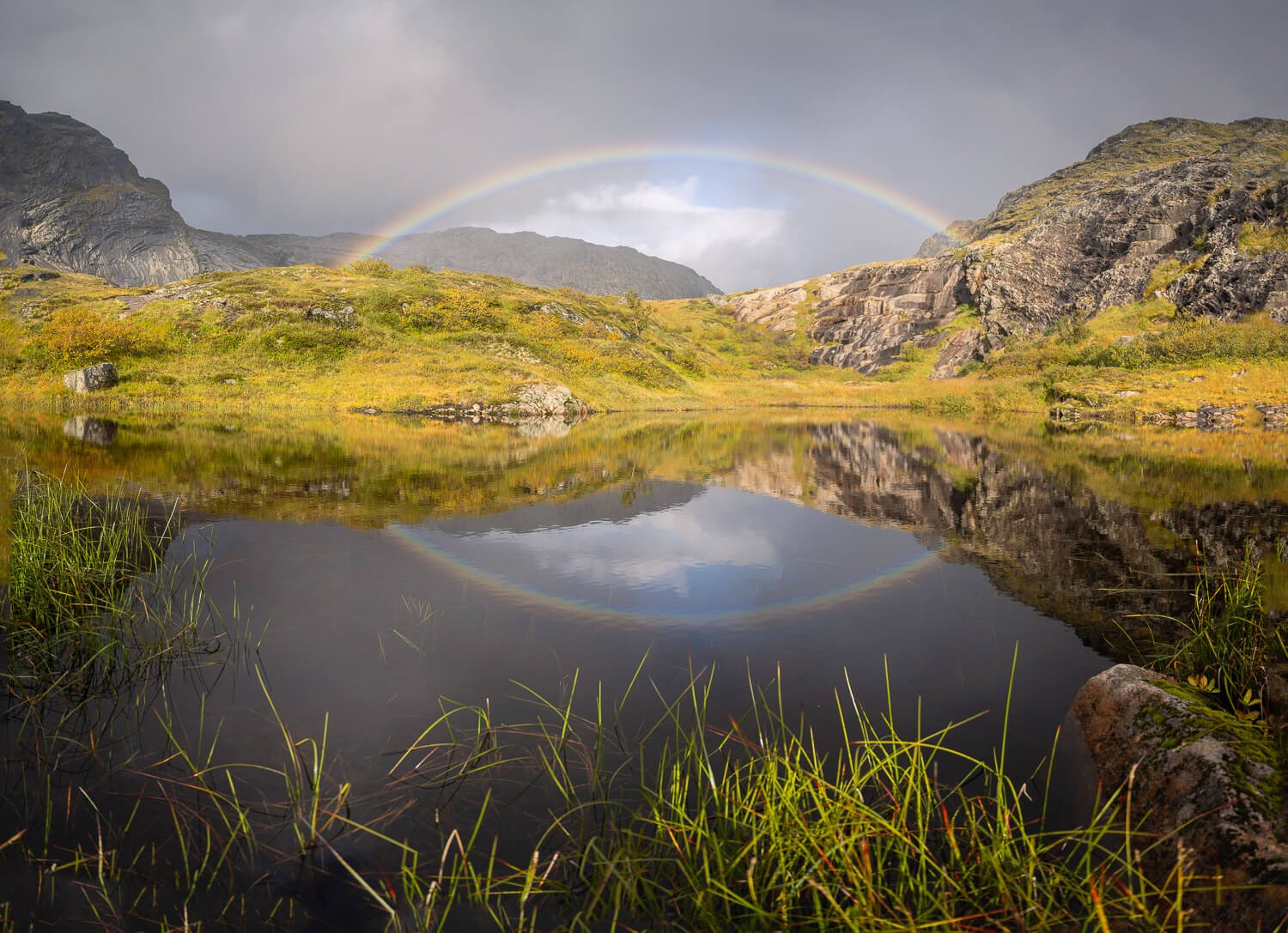
A rainbow in Norway in Autumn.
Additionally, if you are in the mountains, autumn often also means light layers of snow dust on the higher peaks. That adds a lot more character to a landscape. Fresh snow on a landscape looks very different from winter. It has a different texture as it often falls in small quantities, leaving the main features of the mountains still visible. In winter, mountains are completely covered in snow, which often leaves them appearing featureless.
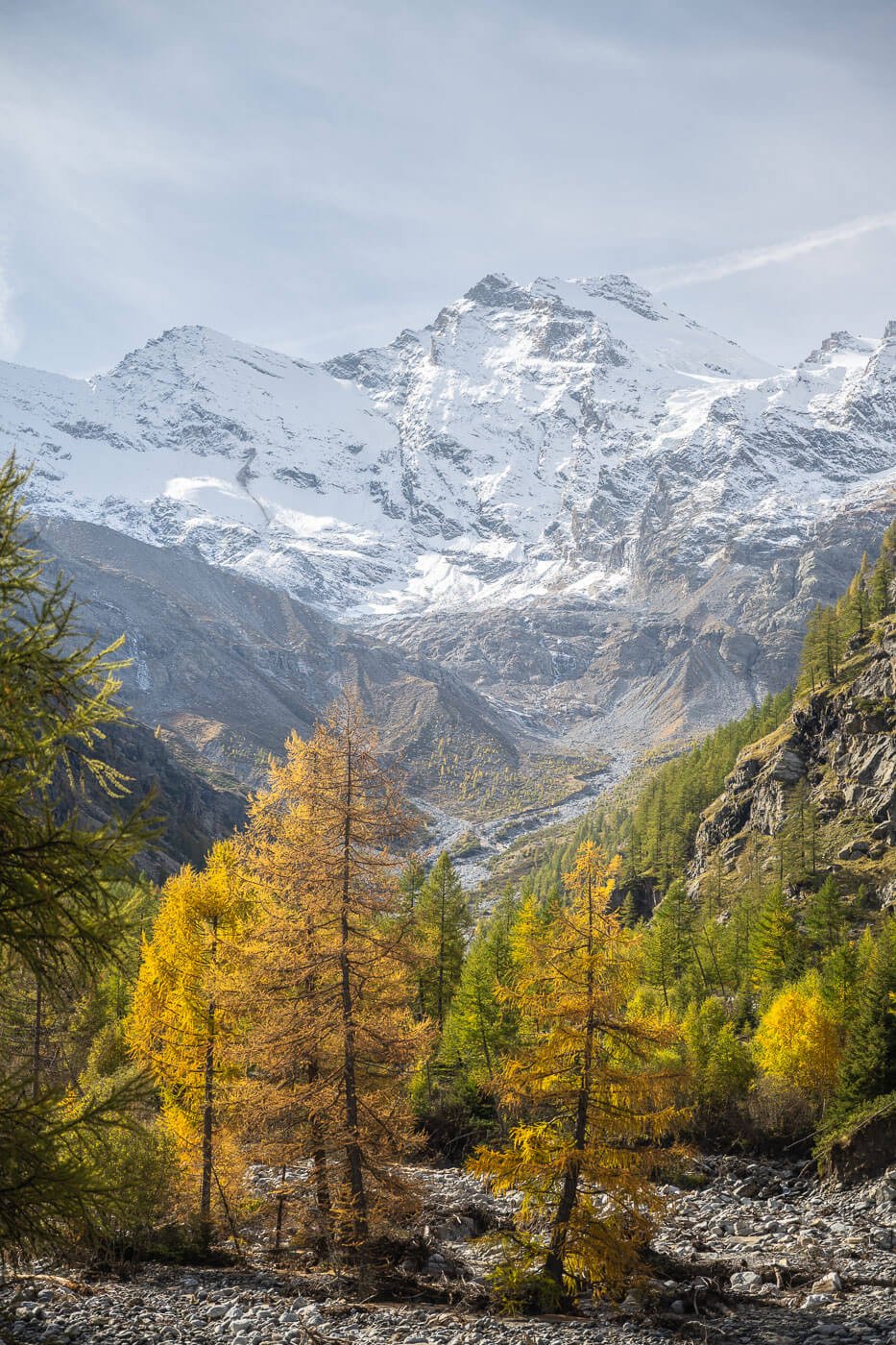
Gran Paradiso, Italy, with a fresh layer of snow.
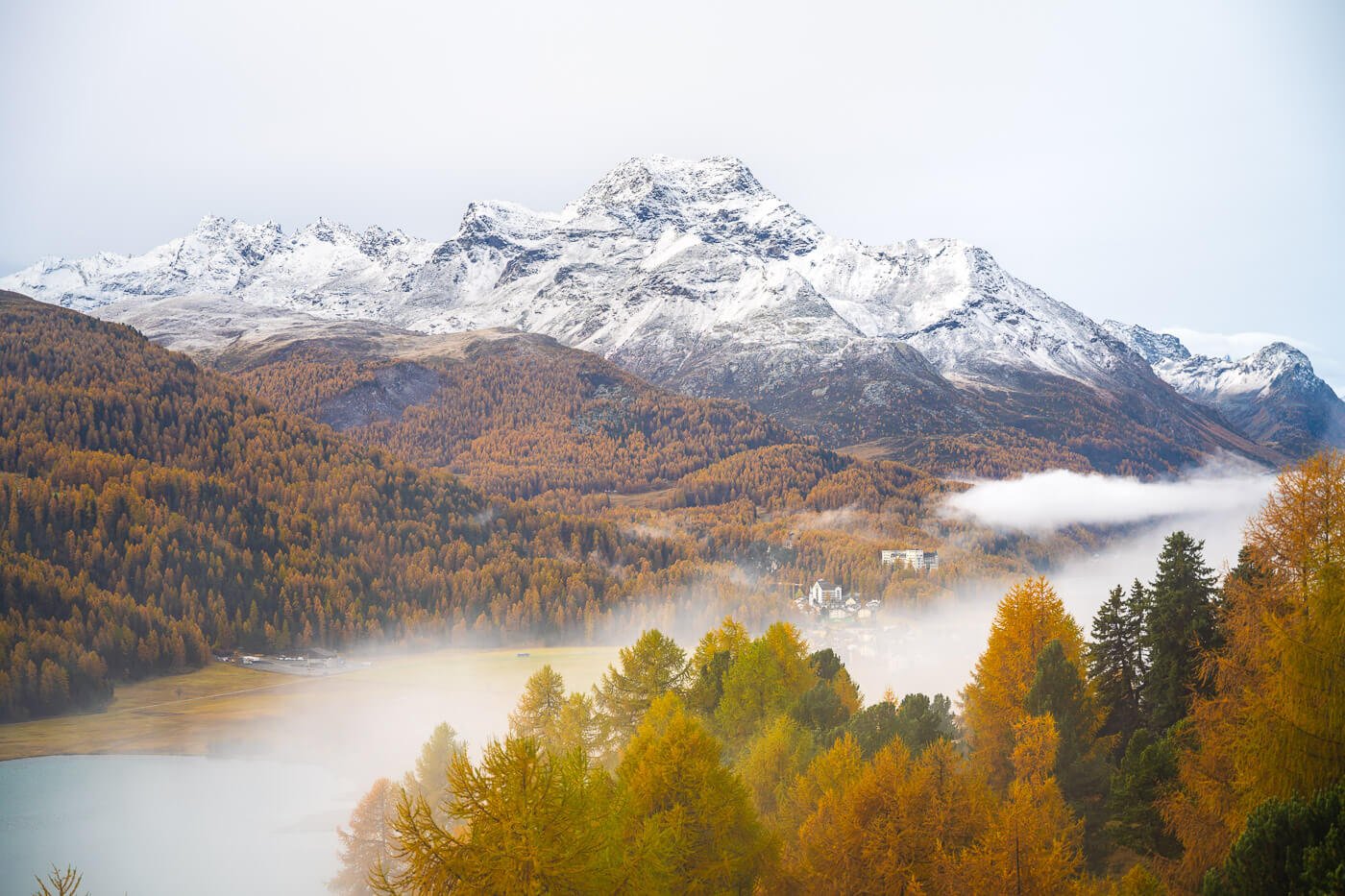
And don’t forget the fog – autumn is often a season when the fog appears rather often in some regions. I love to be in the woods when the fog appears in autumn. The muted but vibrant colors of the fall, combined with the cold tones of the fog, create great conditions for some landscape photography. The best part of it is that you don’t need to be in any faraway place for this: just some woods.


Fog above bodies of water are more common in Autumn.
Use your longer lenses
The beauty of autumn and fall colors is not only in the bigger scenes, but it is often in the details within a landscape, too. Capture the pure colors, the autumn essence, so to speak. A longer focal length allows you to zoom in on the details, which opens up a world of photo opportunities within meters of any given location.
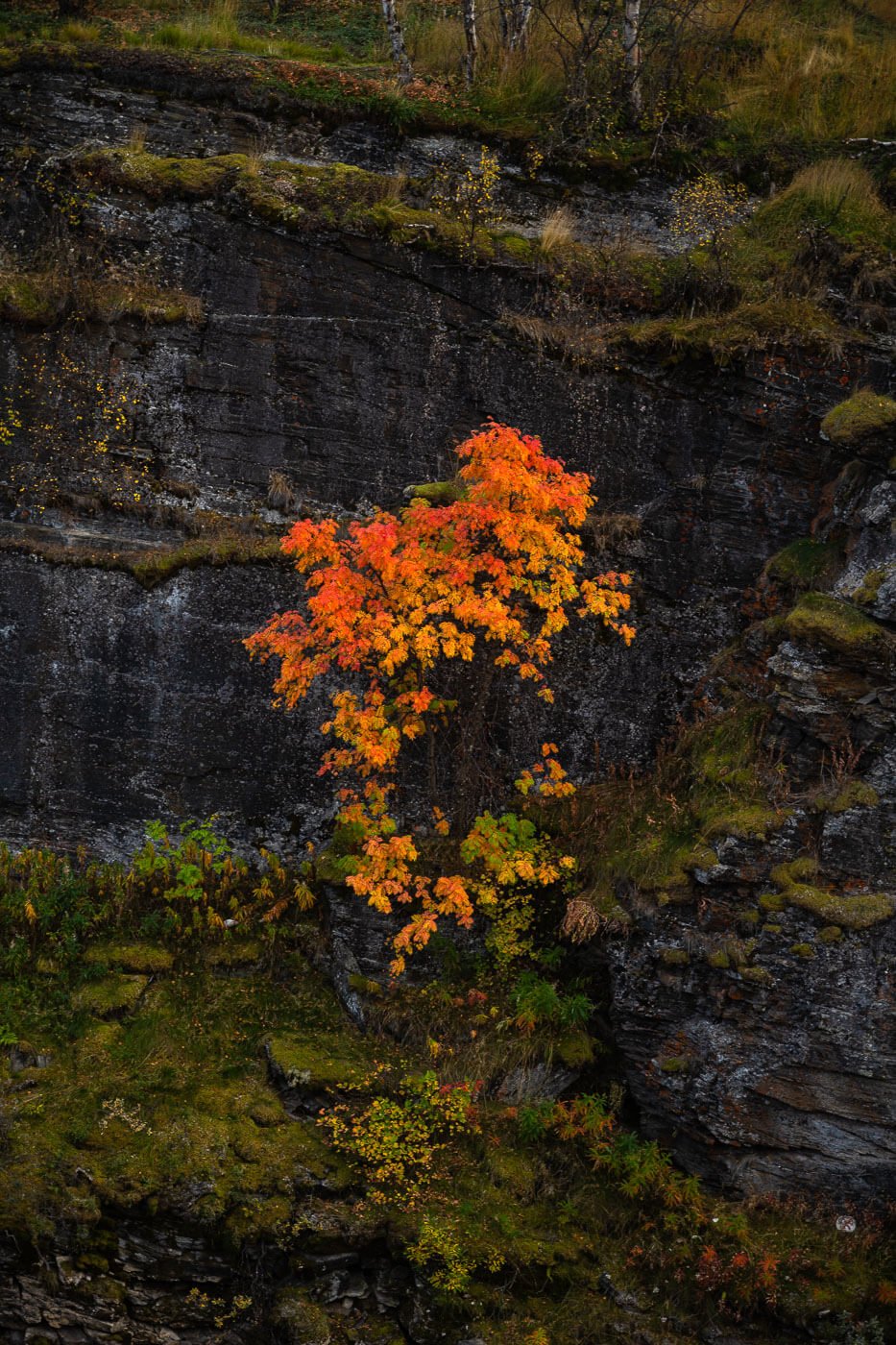

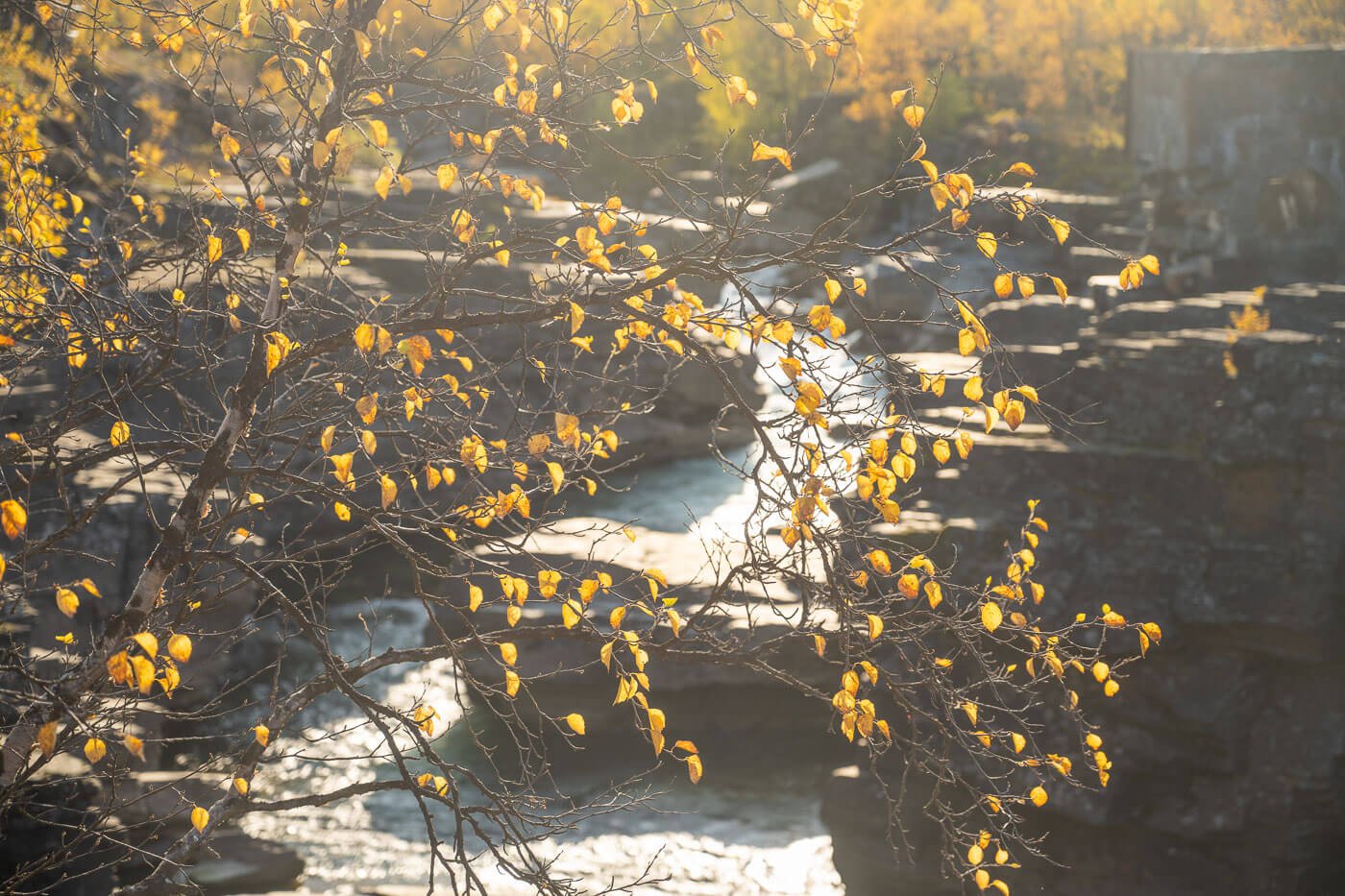
Follow the Autumn – a tip for the travellers
Simply put, within each season, you can make autumn last as long as you can by travelling to different areas. Generally speaking, autumn comes earlier at higher latitudes and at higher altitudes. For instance, within the Arctic Circle and around it, autumn and fall colors often occur from early to mid-September. This slightly changes each season, but the concept is that you can catch autumn colors earlier in these regions.
For instance, I often take vacations in early mid-September, and I usually travel to northern Norway at that time of the year. Where I live, in Switzerland, and generally speaking in the Alps, fall colors often happen from mid-October to early November. Here too, they start first at higher altitudes and then gradually move down to lower altitudes.
This is just an example based on where I live. However, the same applies to other regions in the northern hemisphere. So by planning and researching when fall color happens in different areas within reasonable reach, you could capture the beautiful autumn scenery for a couple of months, instead of 2-3 weeks before the leaves are gone.
As an example, I would catch Autumn colors in early-mid September in Swedish Lapland, then in Northern Norway. Then, back home, I try to capture fall colors at higher altitudes in early-mid-October in Switzerland. And, when I can, I end the Autumn season in the Dolomites in late October to early-mid-November.

Early Autumn in The Dolomites – Early November.
Fall Colors Trackers
Since, as we’ve seen, fall colors will shift year by year, it is sometimes useful to check dedicated fall colors trackers. Whether it’s for a trip nearby or some other locations for a weekend trip, there are some sites that offer this service. In Switzerland, there is a dedicated “Foliage Map” site you can use to check the fall color status. The Engadine region, one of the very best in Switzerland for fall colors, also has a dedicated site to track the color of the larches in the Engadine. There is a similar website for the US too, Fall Foliage Map, to see where the fall colors are at their best.
Last but not least – Mushrooms!
And last but not least, a topic I am not too familiar with myself, but one that offers more opportunities: mushrooms. Autumn is the season for mushroom photography, as that’s when most of them pop up.
Arguably, autumn is the best month to photograph mushrooms, too. It’s peak season for mushroom growth in most regions, and it’s relatively easy to come across at least some in a walk in the forest or in a grassy field.
And – if luck is with you, you may even pick a king Bolete or two! One more good reason to be out there ;).

King Bolete, or a “Porcino”, caught in autumn, in the Norwegian Arctic.
Additional Resources
- Here are some more Landscape Photography Tips for Cloudy and Overcast days landscape photography, and Snow and Winter landscape Photography.
- Discover some beautiful Hiking and Landscape Photography locations.


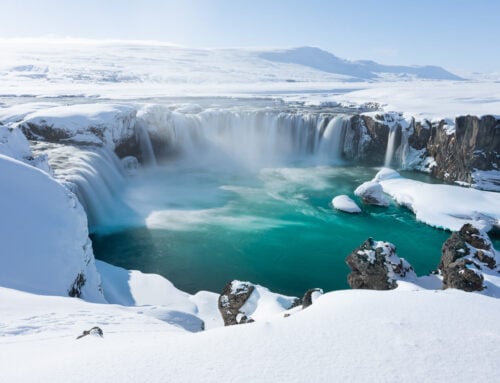
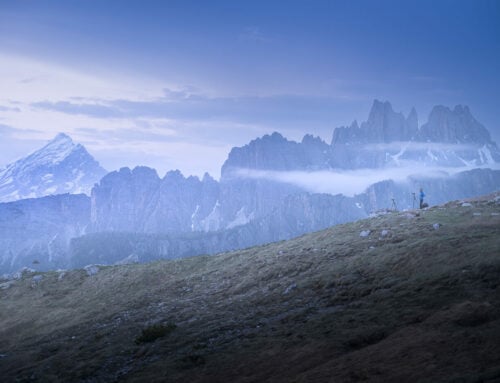
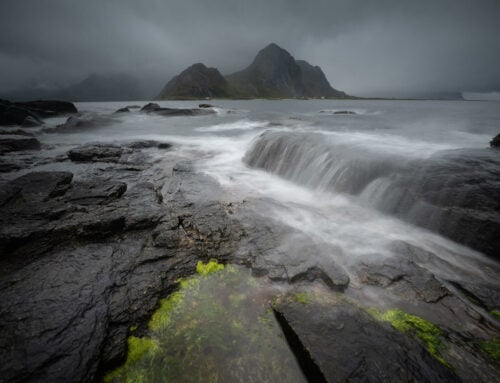

Leave A Comment